When you stand upon the territory that marks out the 17th century-inspired Chavni resort in Maharashtra’s Pune (and by the end of this piece, it is sure to make it to your wishlist!), I urge you to shut your eyes for a second.
You are no longer a 21st-century being. You are now standing at the foothills of two of history’s best works — the Lohagad and Visapur forts, their domes melting into the sky. There are no deadlines to meet, no to-do list actions to tick off, and no emails to respond to. You are simply an observer of the past.
The heritage resort curated by Pune-based urban planner and architect Snehal Karlekar (46), architect Tushar Shetye (46), social worker and banking professional Uday Jagtap (52), and restauranteur Ajit Ingawle (46), reverberates with echoes of the past.
And today, we are going to explore it.
Chavni was a coming together of modern ideas and history, says Karlekar. “The four of us met over the years while engaged in different projects.” United by the common zeal to improve the tourism scene in Maharashtra, they joined hands. “We have always been inclined towards vernacular architecture. The state had a great traditional wisdom and culture,” she says. Her use of past tense is evident.
“I cannot say this [the culture] persists. Most of it is now fusion,” she states. Cognisant about how North and South India still have footprints of their cultures on the land, she says Maharashtra is one of the few places where culture is fading.
And so, backed by an intent to get native and non-native Maharashtra dwellers to “know” the true history of their land, the four decided to dive into a project that would render this possible.
Today, when Karlekar opens a letter from a guest who expresses their happiness at having chosen a vacation spot where their child could get a glimpse of history, she smiles. Chavni has achieved what it set out to do.
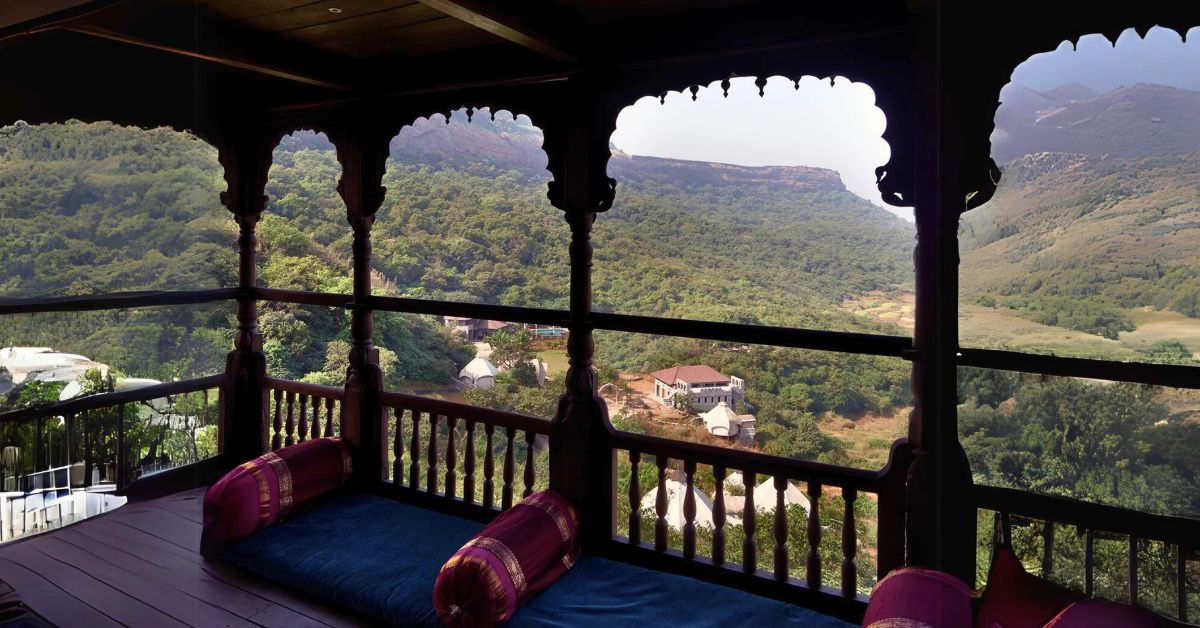
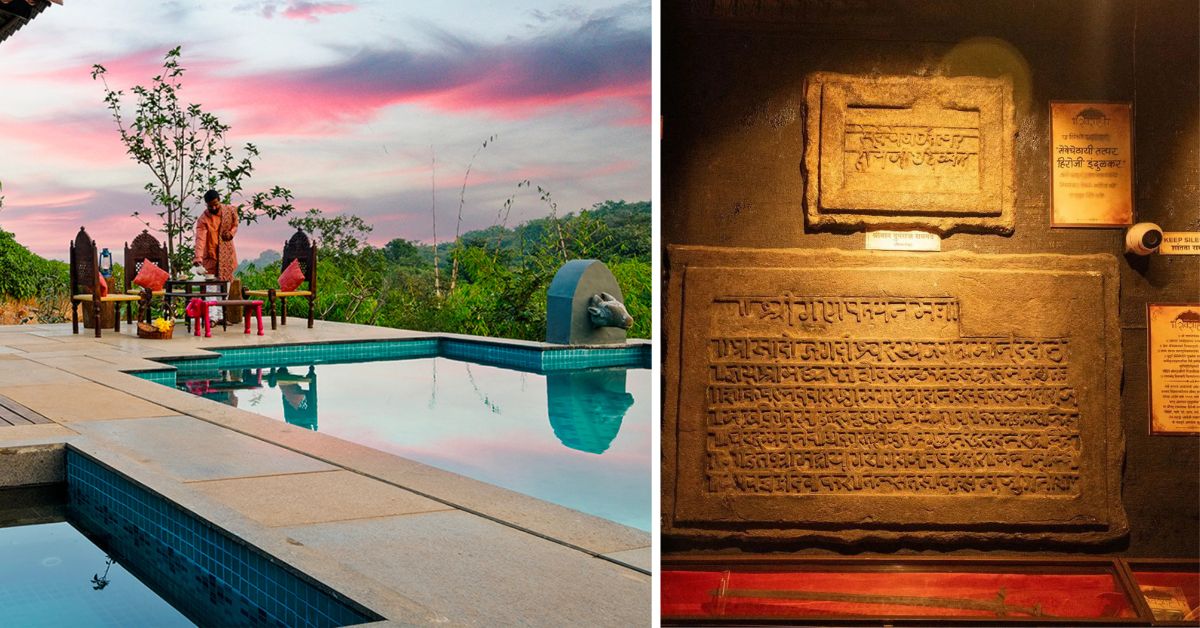
Recreating a century-old vibe
Let your eyes stay shut, as you breathe in the air around you — pure and untouched. Allow your feet to discover the bumpy terrain that rests underneath. The soil has memory.
Not many centuries ago, this terrain played host to trade as discoveries, goods, spices, pearls and more were ferried along the Dakshinpath — the historical North-South super highway. You are standing on a chunk of history.
If you open your eyes, your gaze will naturally fall upon the horizon where the Satavahana Caves — the oldest group of caves dating to the first century BCE — stand. Much of Maharashtra’s history was shaped during these pre-colonial times under the Maratha reign.
If sounds of the past had to accompany the visualisation you just did, there would be the steady clippity-clop of horses as their master soldiers nudged them to go faster. The horses were a prelude to the liveried chariots that followed behind them carrying wealthy families and merchants, while bullock carts were designated to bear the brunt of the goods.
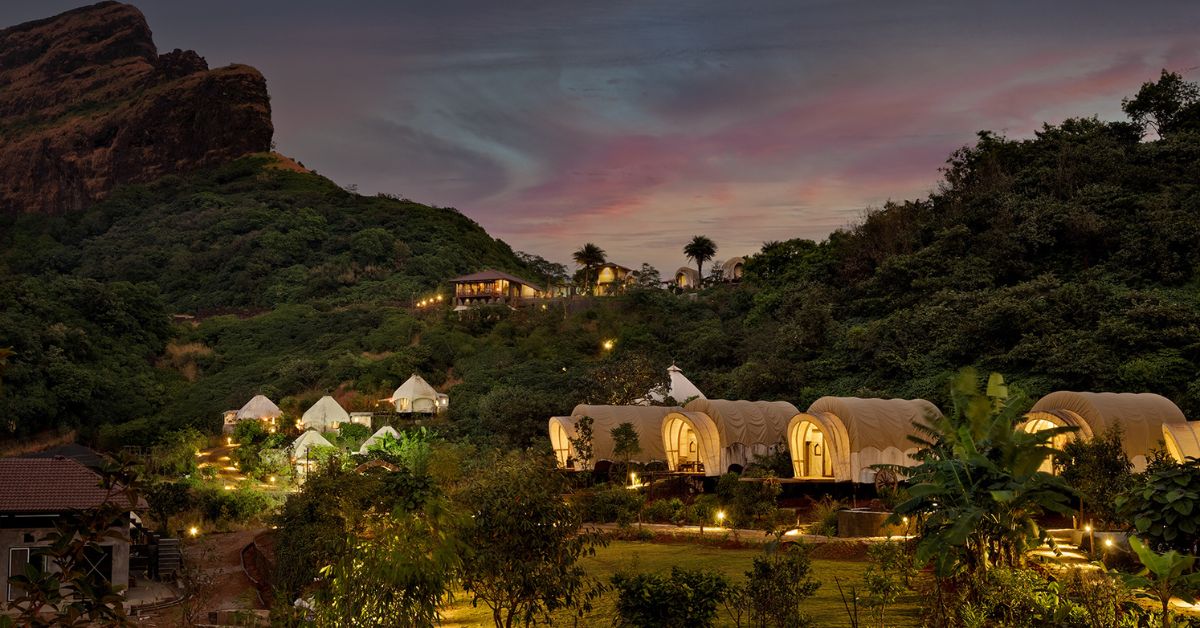
While the important enjoyed these privileges, ordinary people would walk on foot. But providing some respite to them were the chavnis (transit camps). These served as shelters for the troops and traders for when night fell or when they needed rest. It was during their travels from one place to the next that the Marathas spent a substantial chunk of their time here.
In the 1600s, an observer looking from the top of the Lohagad fort would be privy to a beautiful scene of these caravans spinning a colossal web across the terrain. There was no denying that the chavnis held a certain mystique.
The destination was sometimes uncertain but as food was cooked and jokes shared, some of the most beautiful friendships were struck. The desire to recreate those experiences in the present day is what compelled Karlekar and Shetye to set their eyes on this piece of land in 2017. And in 2019, the work began.
Through the design process, the guiding script was to build a space that was rooted in Indianness, says Shetye. “Chavni is a concept that subtly nurtures Maharashtra’s architectural and cultural legacy. It does this while offering a tangible framework for the hospitality and tourism industry in Maharashtra.”
Live like a Maratha
Karlekar and Shetye have been urban planners for two decades now, with a focus on sustainable architecture. Chavni imbues these concepts in the form of its mini carts, seven royal tents, five luxury carts, and a two-bedroom classic suite (wada).
“Even the stays are designed on the concept of ‘being in transit’. Tribes throughout history have always moved from one place to another,” explains Karlekar. It was this rhythm of movement, she says, that separated the opulent Moghuls from the simpler Marathas. “The latter only carried as much as they required and depended on the local food, grain, and vegetables for the rest of their needs.”
This same ethos is championed at Chavni.
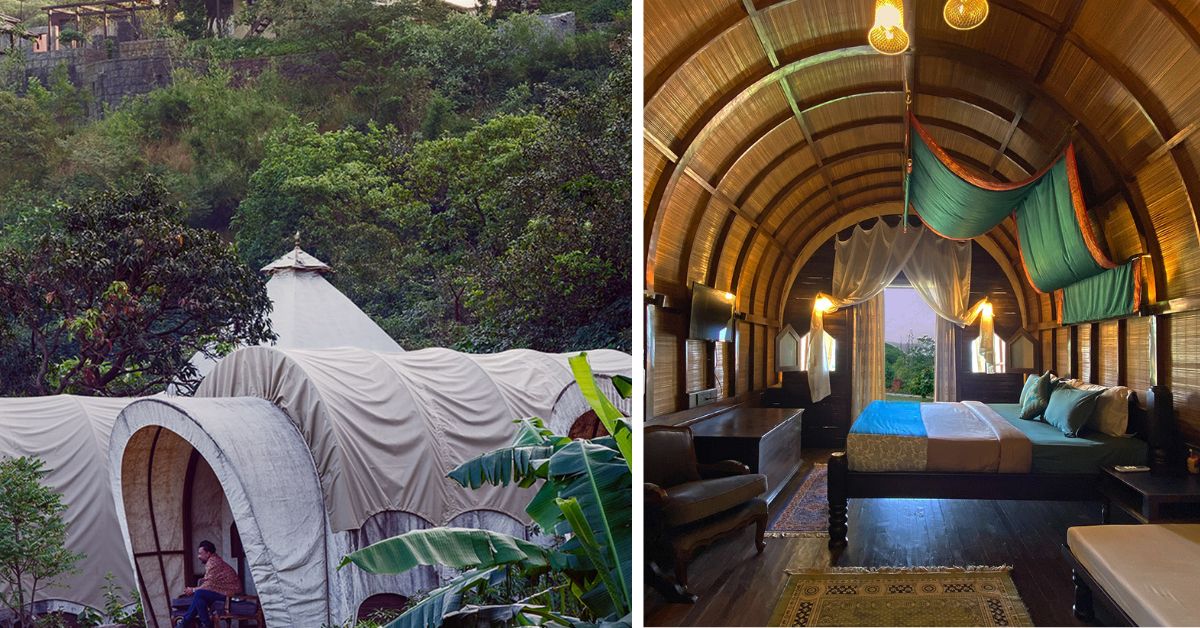
Take for instance the royal carts. Here’s a side of history: The native chieftains of Bara Maval (the land where Chavni stands) were the Deshmukhs, and the royal carts are named after the five Maval sub-regions — Rohida Khore, Hirdas Maval, Gunjan Maval, Pavan Maval, and Nane Maval. Karlekar shares that the carts are real bullock carts with wheels. “If we wish to get them moving to a different location, let’s say Konkan, we can,” she notes, adding that they have been curated with Indian rosewood (shisham), bamboo, jute, and brass.

The Rahuti tents meanwhile are decorated in pieces of Nizami artistry with Himroo (a fabric made of silk and cotton) carpets. Compared to the royal carts, these are smaller dwellings. Each tent has a charpoy (traditional woven bed), flame lamps, and traditional upholstery. The tents are perfect for a bonfire night.
The Sarja-Raja mini carts are tucked away on relatively higher terrain and offer a commanding view of the surroundings. These stays are perfect for hikers and no-fuss trekkers, looking to have an immersive experience with minimal luxuries.

The most premium of all is the glorious Yashwant Wada. Its relatively reverential two-storey design is borrowed from the homes of the chieftains of the 17th century and embodies traditional Maratha charm. The flooring offers the perfect canvas to play a game of shatranj (chess). The Zharoka Room features period-style furniture made with shisham.
All the stays are equipped with a refrigerator, a minibar, a bathroom with a shower, books, and scrolls that tell the story of Bara Maval. Karlekar emphasises that the rooms boast indigenous textiles and hand-painted canapes along with a host of artefacts. But she insists, “It is not like a museum. The artefacts are not just kept on display, but instead are an integral part of the decor.”
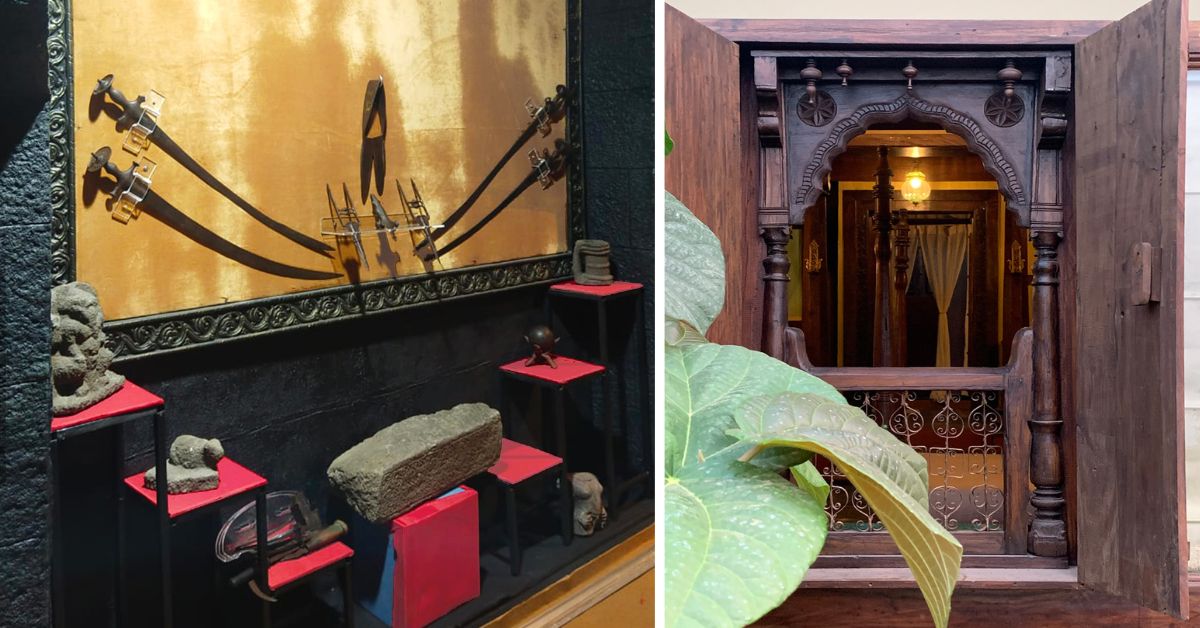
The upholstery features ethnic fabrics like paithani, himroo and ilkal. Jagtap emphasises that “The architectural style, antique elements, and the activities that unfold for a visitor in Chavni instantly conjures up tales of the bygone Shivakalin era with their simplistic splendour. Chavni is a place where stories are told and history is unfolded in its every detail.”
That being said, he adds that the biggest challenge of ‘slow travel’ is curating authentic cuisines that appeal to a global audience. Some of the dishes are sattak (spiced buttermilk), doodh saar (vegetarian spicy milk curry), bharli kombdi (roast chicken dish), kismur (dry prawn salad), kacchya kelyache kebab (kebabs with raw bananas), crab Lohagadi (a crab curry made with local stream crabs), and narali bhaat (a Konkani spiced coconut sweet rice preparation).

Chavni’s founders come from walks of life where sustainability is prided. And so, every nook of the resort is eco-conscious. Rainwater is harvested through aquifers — a body of rock and sediment that holds groundwater. “Usually, the rain that falls on Maharashtra is drained away because of the type of soil,” says Karlekar. “So, we have dug pits and contours in such a way that all the water that falls on the soil gets absorbed into aquifers.”
The land too has seen a journey; from three trees in a deserted landscape to now 1,300 trees and 2,000 native shrubs. There are many pride points at Chavni, but the fact that it is a living piece of history tops them all.
Book your trip, here.
Edited by Pranita Bhat
No comments:
Post a Comment